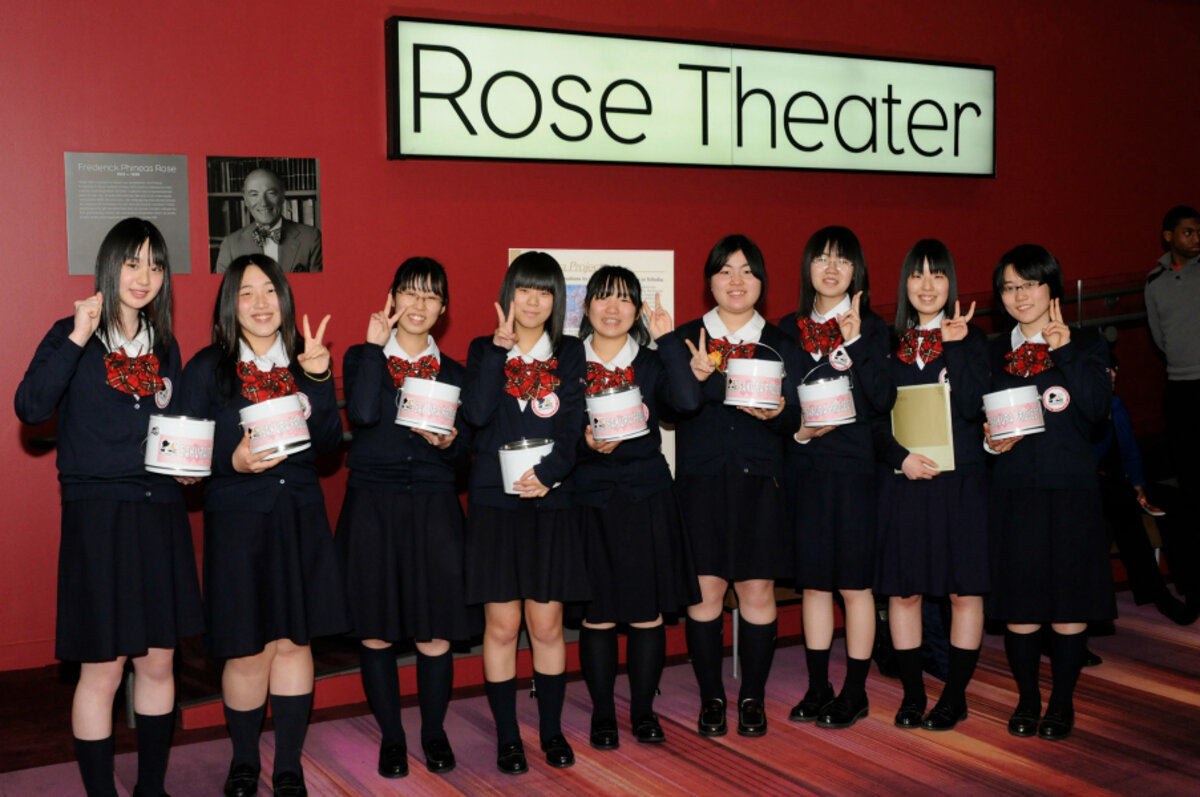Young Japanese sing in New York to remember Fukushima
Loading...
| New York
In the fifth movement of Gustav Mahler’s Symphony No. 2 (“Resurrection”) the chorus sings “Rise again, yes, rise again.”
In the aftermath of the March 2011 tsunami and nuclear disaster at the Fukushima Daiichi power plant about 160 miles north of Tokyo David Titcomb and Atsushi Yamada, co-founders of the Philharmonia Orchestra of New York (PONY), felt compelled to help the youths of the devastated area. They work with Project Hand-In-Hand, an organization that recruits teachers, mobilizes corporate resources, and inspires youths in that region to participate in choral music.
����Editor's note: The original version of this story misrepresented the relationship Titcomb and Yamada have with Project Hand-in-Hand.]
“I get the impression, by the way they perform, that they really have a spiritual sense of renewal. It’s a way to keep the remembrance of the disaster alive,” says Mr. Titcomb, formerly of the Metropolitan Opera and New York City Opera. “It’s important to know they’re still struggling five years later. This helps keep it alive in peoples’ minds and hearts.”
To mark the fifth anniversary of the disaster, Japanese students, along with a choral group from the College of New Jersey and professional musicians from the PONY, will perform landmark symphonies of Mahler and Hector Berlioz at Lincoln Center’s Frederick P. Rose Hall in New York March 29-30.
School choral groups are popular in the area affected by the 2011 disasters, says Titcomb, orchestral manager for the PONY. When Mr. Yamada, principal conductor of the PONY, proposed remembering the disaster by bringing choral groups from Japan to the US, Titcomb agreed.
A portion of the concert’s proceeds will benefit future Project Hand-in-Hand educational efforts.
Hand-In-Hand covers about 90 percent of the $5,000 to $6,000 it costs for each student to participate in the concerts. Fundraising is essential, Titcomb says, and Yamada is a “tireless fundraiser here and in Japan.”
“For many of the students it’s their first time out of their town, or their prefecture. For sure it’s their first time out of Japan,” says Titcomb.
“A lot of us had to evacuate after the earthquake due to houses damaged by nuclear accident, and even now five years since the disaster there are many people in the affected areas who are living in temporary housing,” says youth performer Yuka Saito. “In Fukushima, where I live, radiation from the nuclear accident has had a major impact on our lives.”
She first learned about Project Hand in Hand in 2014 after joining her high school choir.
“Performing on an international stage is a very special experience, something that I have never done before and likely never will again,” Miss Saito says. “I’m sure I will remember this performance for the rest of my life.
“I will do my best to let the world feel our emotions through our performance. I believe that music has the power to [reach] people’s hearts directly and communicate messages beyond what can be done with words alone.”
The Japanese and American student participants must overcome a language barrier, Titcomb says. However, pizza nights and long rehearsals go a long way to helping the students learn to communicate.
A few exercises also help break the ice, says John Leonard, chair of the department of music and the director of choral activities at the College of New Jersey.
“Singing is such a physical thing, you use your whole body. So I might have them do ... something silly like shake your right arm eight times, then your left arm,” says Dr. Leonard, who has worked with the PONY for several years.
Before long the students are doing the hokey-pokey, jumping around and smiling.
But the real communication happens on the stage, when the more than 200 students gather to sing together.
“We communicate through language of music, and that is such a moving thing,” Leonard says. “I can’t even fathom what these [Japanese] students, these young people have been through. They have lost so much, but you can just see the resiliency in their faces.”
The first concert March 29 brings together the most performers ever assembled onstage for Mahler’s Symphony No. 2. It will feature the PONY’s 80-plus musicians and a chorus of 230 Japanese and American singers. The March 30 concert will be a performance of Berlioz’s Symphony Fantastique and Minoru Miki’s Requiem for chorus, vocal soloists, and piano.
Video designer Joachim Schamberger will incorporate digital video, 3-D animation, projection mapping, and lighting design into the performances. Shot with the latest equipment, including drone cameras, the films will draw images from the composers’ lives and the stories and themes explored in their symphonies.
Last year Titcomb traveled to the Fukushima prefecture.
“We arrived at the theater where we were gong to play. It was the first concert there in the four years since the tsunami,” he recalls. “All over the walls of the lobby were pictures of the immediate aftermath. Six hundred families were housed there for six months. They had taken out all the seats and put up tents. That really brought the project full circle. It just really hit home.”
• To learn more visit .




